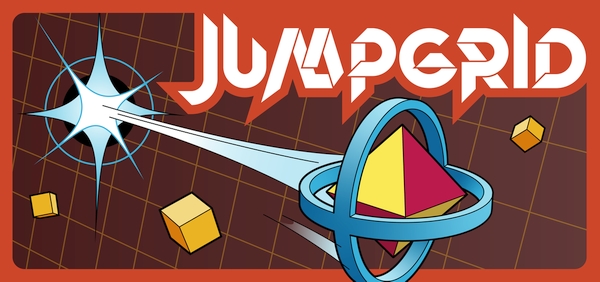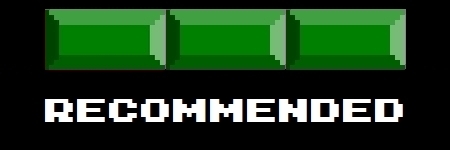
All the way back in 1980, Pac-Man took the world by storm with its grid-based gameplay around dodging ghosts and munching dots. A little over 20 years later, Terry Cavanagh helped kickstart the fledgling mobile game boom with Super Hexagon, his geometrically-based keepaway game.
And now here we are in 2019, and Australian developer Ian MacLarty has combined the two into a wonderful little gem known as Jumpgrid.
Platforms: PC
Publisher: Ian MacLarty
Developer: Ian MacLarty
Genre: Pac-Man Meets Super Hexagon
Release Date: February 12, 2019
ESRB Rating: Not Rated
In Jumpgrid, players take control of an abstract circular object (it kind of resembles a UFO, but not really) that can jump between nodes on a grid. Similar to Namco’s pizza-mouthed mascot, each level is littered with small cubes and players need to collect them all to create an escape tunnel to advance. But instead of including a secret passageway in the maze, MacLarty allows players travelling along the edge of the grid to simply teleport to the other side.
And just like Super Hexagon, a need for constant movement is required to stay one step ahead of the geometric shapes and pulsating laser beams that intrude on each level. Players can jump from node to node on the grid to dodge the shapes, or they can teleport through the shapes and live to tell the tale… so long as the UFO doesn’t touch the enemy shape when it blinks back into existence.
On the surface level, this is really all there is to Jumpgrid. Ultimately, players will spend the vast majority of their time dodging shapes that look like deadly hammers or sharp knives while collecting a handful of cubes per level. But MacLarty makes this gameplay loop so satisfying (and so easy to restart a level after dying) that I found myself completely entranced by Jumpgrid’s entire experience. Much like I was as a child with Pac-Man and a few years ago with Super Hexagon.
Later levels add boss-like shapes to the mix, and moving even further into the game’s 100 levels will reveal roving movable grids and locales that look like they’re pulled straight out of your favorite “bullet hell” shooter. All together, this gives players a few different strategic options to tackle each level in Jumpgrid. You can push the pedal to the metal and go as fast as you can, or you can slow it down and try to time your jumps for maximum survivability. But the real fun comes from the realization that either choice will likely end up getting you killed dozens of times.
In addition to Jumpgrid’s main campaign, MacLarty has also included a Speedrun Mode that splits the game into four Quadrants of 25 levels each that players must complete as fast as they can. Your fingers will need to burn across the keyboard to adequately complete this absolutely brutal mode, and keeping your UFO on track at all times to register a decent time will requires some serious brainpower. Thankfully, a Game Speed option makes the action move a tad slower, but that doesn’t make it much easier.
Diving into Jumpgrid’s geometric world has become a daily habit for me. It’s puzzle-like levels are perfect for playing a few minutes at a time, and Speedrun Mode is a devious timesink that will instantly hook in Pac-Man or Super Hexagon junkies looking for a new challenge.
And at only $5, Jumpgrid’s wallet-friendly price is proof that amazing games can come in small packages.

Review Disclosure: A review copy of Jumpgrid for the PC was provided by Ian MacLarty for the purposes of this review.







